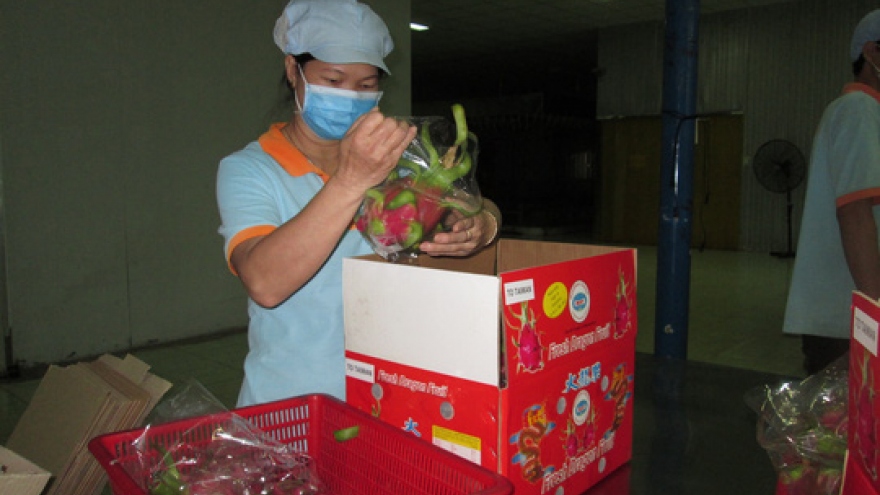Vietnamese fruit need export support
Vietnam has shown strong growth in fruit and vegetable exports in recent times, but for the sustainable development of exports more support from the State and enterprises is required.
 |
The local fruit industry expects to ship mangoes to the US in the near future, following dragon fruit, rambattan, longan, lychee and star apples being approved.
In addition, Vietnamese fruits have been marketed in other countries, such as New Zealand, China, Japan, Russia and the Republic of Korea.
According to the Vietnam Fruit and Vegetables Association, the export value of Vietnamese fruit in the first nine months of the year reached US$1.8 billion, close to the total export value for 2015, and exceeded the export value of rice for the first time.
The fruit and vegetable sector was in third place in the list of the top nine agro-forestry-fishery products by export value. The export value of fruit and vegetables was expected to reach US$2.5 billion for the whole year, said the association.
Phan Thi Dieu Ha, deputy head of the Ministry of Industry and Trade’s Import and Export Department, said the fruit and vegetable sector achieved the highest growth rate in export value among all agro-forestry-fishery products.
Meanwhile, international integration would bring more chances for Vietnam to export fruit and vegetable products, Hà said. However, integration would also make Vietnam’s exports of fruit and vegetables face more technical barriers in export markets, including quarantine conditions and food safety regulations.
In addition, the Ministry of Industry and Trade said the production of fruit and vegetables in Vietnam was still at a small scale and had unstable quality levels. The production has not been planned neither, so the management of production and of investment into production infrastructure has been difficult.
Relations between production and consumption were not close enough, leading to high inventories for middle crops and losses for farmers and enterprises .
Pest and disease control according to GlobalGAP and VietGAP standards have not yet been widely applied. Areas of safe vegetable production have reached 8-8.5 % of the total vegetable growing area nationwide.
Exports of fruit and vegetables still have many weak points including the signing of contracts, transport, export procedures, food hygiene and safety, and international payments. Local enterprises do not have the ability to implement large contracts, while foreign companies have been afraid of investing in vegetable production.
According to Dao Tran Nhan, Vietnam’s trade counsellor in the US, to enter strict markets like the US, fruit and vegetable products must undergo strict standards of control systems, including standards for the growing regions, irrigation and custom inspections at ports.
To promote fruit and vegetable exports, the Ministry of Industry and Trade said Vietnam should review plans for growing fruit and vegetables for export. Initially, the State would concretise the general plan for agricultural development by 2020 and towards 2030. Under the plan, the development of fruit and vegetables would be implemented closely in advantageous regions with each province developing one or two major types of fruit trees. Production would be expanded, with the growing of some trees to meet the demands of importers and also to provide material for export processing factories prioritised.
Bui Huy Sơn, head of the Ministry’s Trade Promotion Agency, said some kinds of fruit have received brand protection certificates in Vietnam, including Nam Roi Hoang Gia pomelo, Chin Hoa durian and Lo Ren star apple.
In the future, Vietnam should promote brand building for high quality fruit and output to improve their competitiveness on the global market, Son said.



